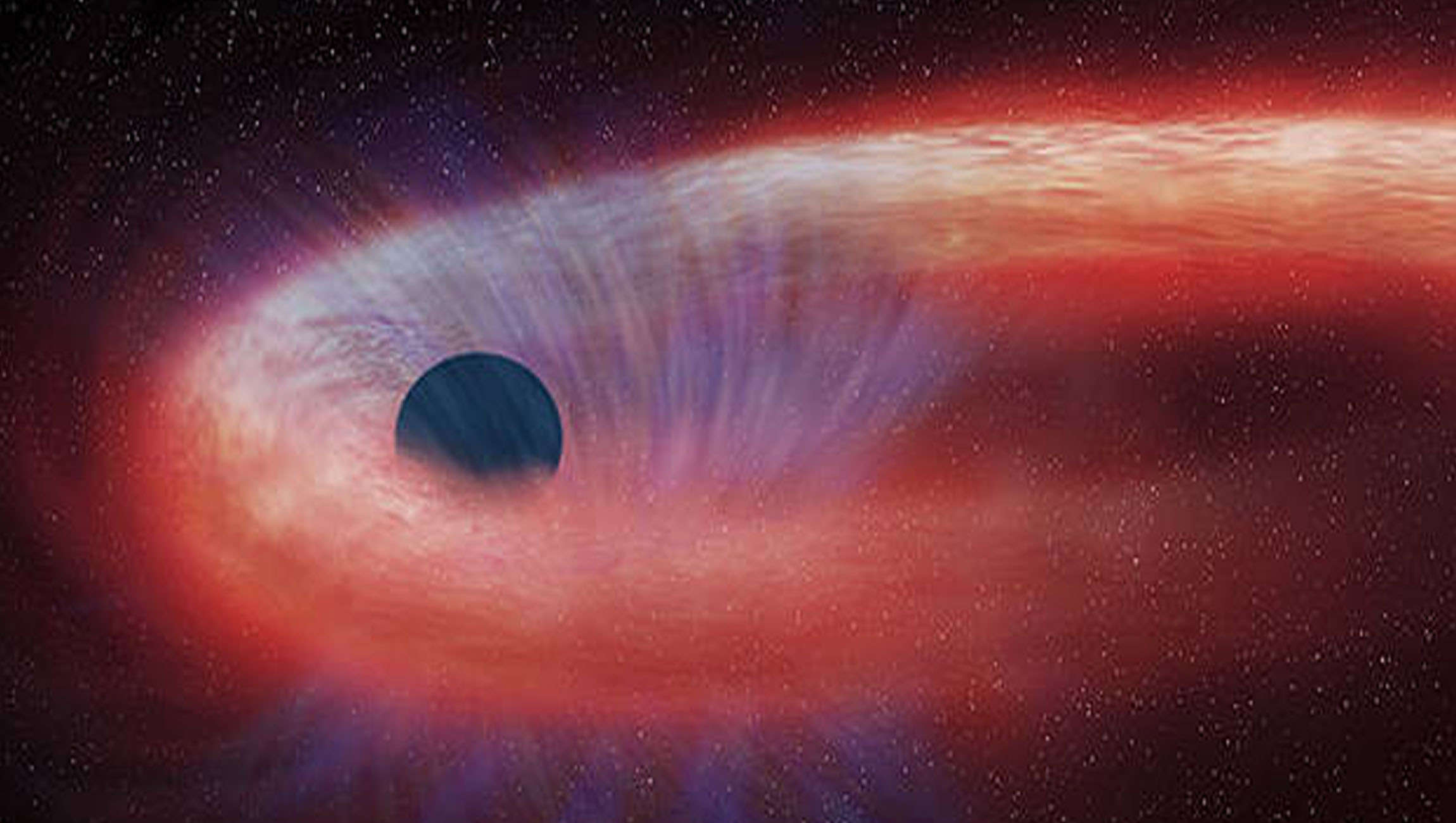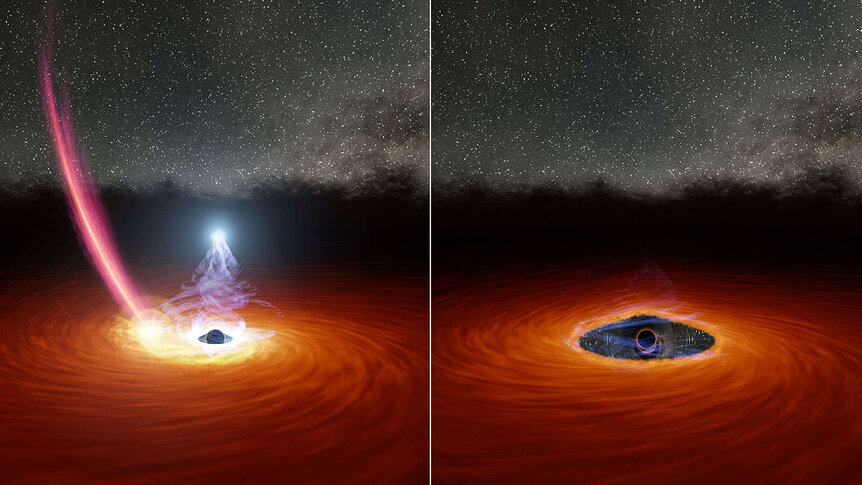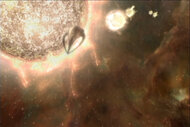Create a free profile to get unlimited access to exclusive videos, sweepstakes, and more!
This black hole glitched like a cosmic computer…then restarted itself out of nowhere

Can a black hole really flip a switch on itself? At least one did, since it was caught doing just that in real time.
Phenomena like this just don’t happen. That explains the shock a team of MIT astronomers got when they observed a flash of brightness from a supermassive black hole that then dimmed as if someone pulled the plug on it. Then, as if out of nowhere, it restarted like all your electrical appliances after a thunderstorm blackout. What actually went down was that the black hole’s corona (a blindingly bright ring of electrons and other high-energy charged particles right on the edge of its event horizon) vanished into darkness. Then it reignited.
“We expect that luminosity changes this big should vary on timescales of many thousands to millions of years,” said Erin Kara, assistant professor of physics at MIT, in a press release. “But in this object, we saw it change by [a factor of] 10,000 over a year, and it even changed by a factor of 100 in eight hours, which is just totally unheard of and really mind-boggling.”
Kara and her team, who recently published a study in The Astrophysical Journal Letters, had seen something extraordinary — and baffling — through ASSASN (All-Sky Automated Survey for Super-Novae). Black holes devour everything that crosses the point of no return otherwise known as the event horizon, but why would one start to self-cannibalize by eating its own corona? That’s not how it works. That’s not how any of this works. Something else would have to have caused chaos within the black hole, and Kara’s team believed they knew what it was. Sometimes, even supermassive black holes can bite off way more than they can proverbially chew.
The astronomers became convinced that the hungry black hole’s immense gravitational pull snagged a star that was too much for it to handle. That star is thought to have then run rogue through the black hole’s accretion disc, the ever-swirling disc of light particles and other cosmic debris that gets caught by a black hole’s gravity and are destined to end up in its gaping maw. It must have disrupted the accretion disc to the point that the corona and everything else were suddenly caught in the inescapable gravity of the black hole. Then it was lights out, at least for a while, but the team kept an eye on the black hole with NASA’s X-ray telescope NICER.
“Our observations could be explained by the interaction between the accretion flow and debris from a tidally disrupted star,” Kara and her colleagues said in the study.
Celestial bodies are pulled towards and away from each other by tidal forces depending on which body has stronger gravitational forces. When the star came too close to the black hole, tidal disruption occurred, and the gravitational forces of the much more massive black hole pulled at the star so violently that they tore it apart. That sent both the corona and most of the material accreted by the black hole hurtling past the event horizon. The black hole then seemed dead. What the astronomers didn’t expect was that the corona would start rebuilding itself at unbelievable speed. The black hole started to rebuild its accretion disc and corona by pulling in material from its outer reaches.
Because this black hole is still acting temperamental, Kara and her team are going to keep an eye on it to watch out for anything else bizarre. Any unlucky stars crossing its path in the future could cause an epic outburst.















